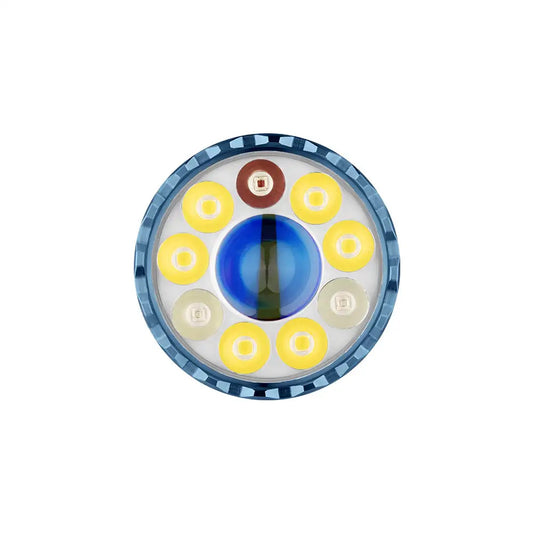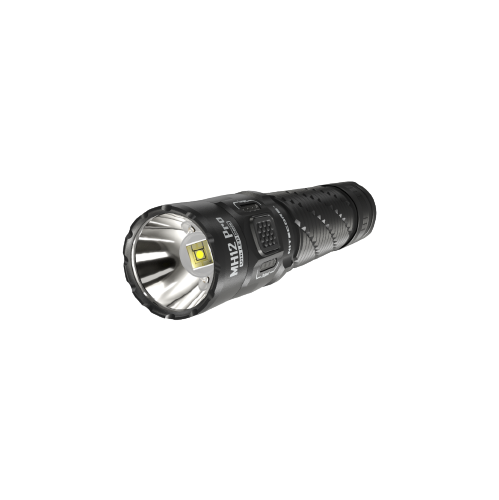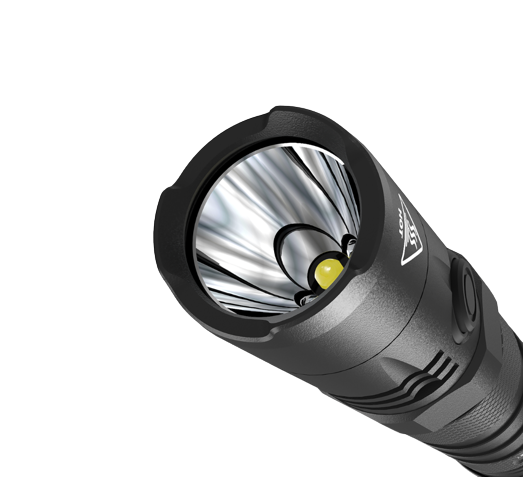
The Dawn of Human Technology (Circa 2.9 Million Years Ago): The Oldowan Industry
The story of humanity's technological journey begins not with sleek smartphones or towering skyscrapers but with a simple pebble chipped into a crude cutting edge. This humble artifact, a hallmark of the Oldowan industry, represents a pivotal moment in human evolution, marking the dawn of our ancestors' ability to manipulate their environment and unlock new possibilities. Dating back a staggering 2.9 million years ago to at least 1.7 million years ago, the Oldowan industry offers a fascinating glimpse into the early stages of human toolmaking, laying the groundwork for the remarkable technological advancements that define us today.

A Technological Breakthrough: From Pebbles to Possibilities
The core technology of the Oldowan industry revolves around the production of simple stone tools. Unlike the more sophisticated implements that would emerge later, Oldowan tools were characterized by their unpretentious design. Early hominins, likely including species like Homo habilis and possibly even Australopithecus, used a technique known as percussion knapping. This involved selecting a suitable stone core, typically made of readily available materials like quartz, quartzite, or basalt. Using a hammerstone, they would strike the core at strategic points, carefully detaching flakes with sharp edges. These flakes, along with the modified core itself (often called a chopper), became the first tools in humanity's vast repertoire.
While seemingly basic in their construction, Oldowan tools revolutionized the lives of our early ancestors. They provided a much-needed edge in a challenging environment. The sharp edges of the flakes and choppers allowed hominins to undertake a variety of tasks that were previously difficult or impossible. Some of the key benefits of this newfound technology included:
• Enhanced Food Acquisition: Oldowan tools facilitated the processing of food in ways previously unimaginable. Tough animal bones, which held valuable marrow, could now be cracked open with choppers, providing access to a critical source of nutrients. Additionally, flakes could be used for butchering meat, increasing the efficiency of food procurement. They might also have been used to dig for plant tubers or scrape bark from trees, broadening the dietary options available to hominins.
• Crafting Other Tools: While direct evidence is limited, it's possible that Oldowan tools were used to create implements from more perishable materials like wood or bone. These tools, which haven't survived the test of time, might have served diverse purposes, further enhancing the technological capabilities of early hominins.
• Defense and Protection: While not their primary purpose, Oldowan tools could have been used for rudimentary defense against predators or for breaking open tougher materials like nutshells.
The development of these early tools signifies a crucial cognitive leap in human evolution. It demonstrates the emergence of:
• Planning and Foresight: The selection of suitable stones, the deliberate application of force to detach flakes, and the understanding of how to use these tools for specific purposes all point towards an ability to plan ahead and anticipate future needs.
• Problem-Solving Skills: The ability to identify a problem, such as difficulty accessing nutritious marrow in a bone, and then devise a solution – in this case, using a tool to crack it open – demonstrates sophisticated problem-solving capabilities.
• Fine Motor Control: The act of knapping requires a high degree of precision and control over hand movements. This skill would be crucial for future technological advancements.
Unveiling the Makers: Who Wielded the Oldowan Tools?
The exact identity of the hominins who created and utilized Oldowan tools remains a subject of ongoing debate. Traditionally, Homo habilis, known as "handyman" due to its larger brain size compared to earlier hominins, was credited with this innovation. However, recent discoveries have challenged this notion. Tools resembling Oldowan technology have been found at sites predating the earliest Homo habilis fossils. This suggests that other hominin species, possibly Australopithecus, might have also possessed the cognitive skills necessary for rudimentary toolmaking.
Further research is needed to definitively attribute the Oldowan industry to a specific hominin species. However, the presence of these tools across various sites in Africa, particularly in the iconic Olduvai Gorge in Tanzania (where the industry gets its name), paints a picture of a widespread technological tradition practiced by early hominins.

A Legacy that Endures: The Oldowan's Lasting Impact
The Oldowan industry didn't vanish overnight. It persisted for nearly a million years, laying a crucial foundation for the development of more sophisticated toolmaking traditions. Around 1.7 million years ago, the Acheulean industry emerged, characterized by the iconic handaxe – a symmetrical, bifacial tool requiring greater planning and skill to manufacture. While the Acheulean represented a significant advancement, it owed its existence to the groundwork laid by the Oldowan. The basic principles of knapping, the understanding of how to use tools to manipulate the environment, and the cognitive skills honed through Oldowan toolmaking all contributed to the development of this next stage in human technological evolution.
The impact of the Oldowan industry extends far beyond the immediate benefits it provided to early hominins. It represents a significant turning point in human history, marking the:
• Emergence of Culture: The ability to create and transmit complex knowledge, such as the techniques of toolmaking, signifies the dawn of a shared cultural heritage among hominin groups. This cultural transmission would become a hallmark of human societies, allowing for the accumulation of knowledge and the development of increasingly sophisticated technologies over time.
• Evolutionary Advantage: The ability to manipulate the environment through tools provided a significant evolutionary advantage for hominins. It allowed them to exploit new food sources, defend themselves more effectively, and potentially even modify their habitats. This, in turn, likely contributed to changes in diet, brain size, and social organization, shaping the course of human evolution.
• Foundation for Future Technologies: The Oldowan industry laid the groundwork for the remarkable technological advancements that define our species today. From the handaxes of the Acheulean to the complex machines of the modern world, the ability to create and use tools has been a constant thread throughout human history.
Beyond the Tools: Unveiling the Lives of the Oldowan Hominins
While the tools themselves offer valuable insights into the technological capabilities of early hominins, understanding the context in which these tools were used allows for a more complete picture of their lives. Archaeologists have meticulously analyzed Oldowan sites, examining the distribution of tools, animal bones, and other artifacts. This research paints a picture of a mobile lifestyle, with hominins likely living in small, nomadic groups and exploiting various ecological niches.
The presence of butchered animal bones alongside Oldowan tools suggests that these early hominins scavenged and hunted to some degree. However, the exact dietary composition of Oldowan hominins remains a topic of ongoing investigation. They likely consumed a variety of resources, including meat, plants, and scavenged carrion, depending on the availability in their environment.
Understanding the social dynamics of Oldowan hominins is challenging due to the limitations of the archaeological record. However, the collaborative nature of toolmaking and the potential for shared knowledge transmission suggest some level of social cohesion within groups. Whether these groups exhibited complex social structures or remained relatively egalitarian is an area of ongoing research.
Unveiling the Mysteries: Challenges and Future Directions
Despite the wealth of information gleaned from Oldowan sites, fully understanding this critical period in human history remains challenging. The fragmentary nature of the archaeological record leaves many questions unanswered.
• Dating Techniques: Refining dating techniques for archaeological sites allows for a more precise understanding of the temporal scope of the Oldowan industry and its relationship to other technological traditions.
• Identifying the Toolmakers: Determining definitively which hominin species were responsible for Oldowan tools is crucial for piecing together the evolutionary puzzle of early toolmaking. This might involve uncovering new hominin fossils or developing new methods for analyzing existing ones.
• Understanding Daily Life: Reconstructing the daily lives of the Oldowan hominins beyond tool use requires further investigation of their campsites, hunting/scavenging patterns, and potential social structures. This might involve analyzing butchered animal bones, studying the distribution of artifacts at sites, and exploring the use of perishable materials like wood or bone.
By addressing these challenges and continuing to explore Oldowan sites, researchers hope to gain a deeper understanding of this pivotal period in human history. This will allow us to paint a more complete picture of the lives of our early ancestors, the cognitive leap they made with the development of tools, and the foundation they laid for our species' extraordinary technological trajectory.
The Oldowan industry, with its simple yet groundbreaking tools, marks a crucial chapter in humanity's story. It reminds us of our humble beginnings and the power of human ingenuity. It's a testament to the early stirrings of our technological spirit. This spirit continues to drive us forward in our relentless pursuit of innovation and exploration.
The Enduring Allure of the Oldowan: A Look Beyond the Tools
The Oldowan industry isn't just about the tools themselves. These artifacts act as a window into a bygone era, offering tantalizing glimpses into the lives and minds of our early ancestors. Here, we delve deeper into some of the ongoing avenues of research that aim to paint a more holistic picture of the Oldowan world.
Beyond Subsistence: Exploring the Cognitive Landscape
While the immediate benefits of Oldowan tools revolved around food acquisition and processing, the cognitive leap required for their creation suggests a more complex mental landscape. Researchers are exploring the potential implications of toolmaking on the cognitive development of early hominins.
• Planning and Foresight: The ability to select suitable stones, plan the knapping process, and anticipate the outcome suggests a level of abstract thinking beyond simply reacting to immediate needs.
• Problem-Solving Skills: The act of identifying a problem (difficulty accessing food) and devising a solution (using a tool) demonstrates advanced cognitive abilities.
• Language Development: The potential for communication and collaboration in toolmaking might have spurred the development of early language skills, allowing hominins to share knowledge and techniques.
Investigating these cognitive advancements is challenging, but researchers are exploring various avenues. Studies on the brain size and structure of potential Oldowan hominins, combined with experimental replications of toolmaking techniques, may shed light on the cognitive demands of this practice.
The Art of Oldowan? Exploring Symbolism and Early Culture
The question of whether Oldowan hominins engaged in any form of symbolic behavior remains a topic of debate. While there's no definitive evidence of deliberate ornamentation or artistic expression associated with Oldowan tools, the possibility shouldn't be entirely discounted.
• Tool Selection: The selection of specific stones for toolmaking, beyond mere functionality, might hint at some level of aesthetic preference.
• Repetitive Patterns: The consistent use of specific knapping techniques across different sites could indicate a shared cultural practice, potentially with symbolic meaning beyond just utility.
Further research is needed on the potential symbolic significance of Oldowan tools and the associated behaviors. This might involve analyzing patterns in tool selection and use, searching for potential symbolic markings on artifacts, and exploring the use of ochre or other pigments at Oldowan sites.
Understanding the environment in which Oldowan hominins lived is crucial for piecing together their overall way of life. Paleoenvironmental studies focus on reconstructing the landscapes, climates, and available resources of the time.
• Climate Change and Adaptation: The Oldowan period encompassed significant climatic fluctuations. Studying how hominins adapted their tool use and subsistence strategies to these changes provides insights into their resilience and resourcefulness.
• Exploiting Diverse Habitats: Oldowan sites have been found in various environments, from savannas to woodlands. Understanding the specific ecological niches exploited by hominins allows for a more nuanced picture of their foraging strategies and tool use patterns.
By studying animal remains, plant fossils, and geological data from Oldowan sites, researchers can reconstruct the environmental context and gain a better understanding of how hominins interacted with their surroundings.

The Long Road Ahead: Unveiling the Future of Oldowan Research
The Oldowan industry continues to be a fertile ground for new discoveries and ongoing debates. As research methodologies evolve and new technologies emerge, our understanding of this pivotal period in human history is constantly growing. Here are some promising areas of future exploration:
• Advanced Lithic Analysis: New techniques for analyzing the microscopic wear patterns on Oldowan tools might offer insights into their specific functions and how they were used in daily life.
• Microbial Studies: Emerging research exploring the presence of microbial communities on Oldowan tools could potentially provide clues about the environments they were used in and the types of materials they processed.
• Experimental Archaeology: Replicating Oldowan toolmaking techniques using various materials and methods can enhance our understanding of the cognitive skills and physical capabilities required for this practice.
By combining these new approaches with traditional archaeological methods, researchers can continue to unlock the secrets of the Oldowan world. The legacy of this early toolmaking tradition lies not just in the simple stone tools themselves but in the remarkable journey of human ingenuity that they represent. The Oldowan industry stands as a testament to the spark of innovation that ignited within our early ancestors, a spark that continues to define us as a species today.
























































